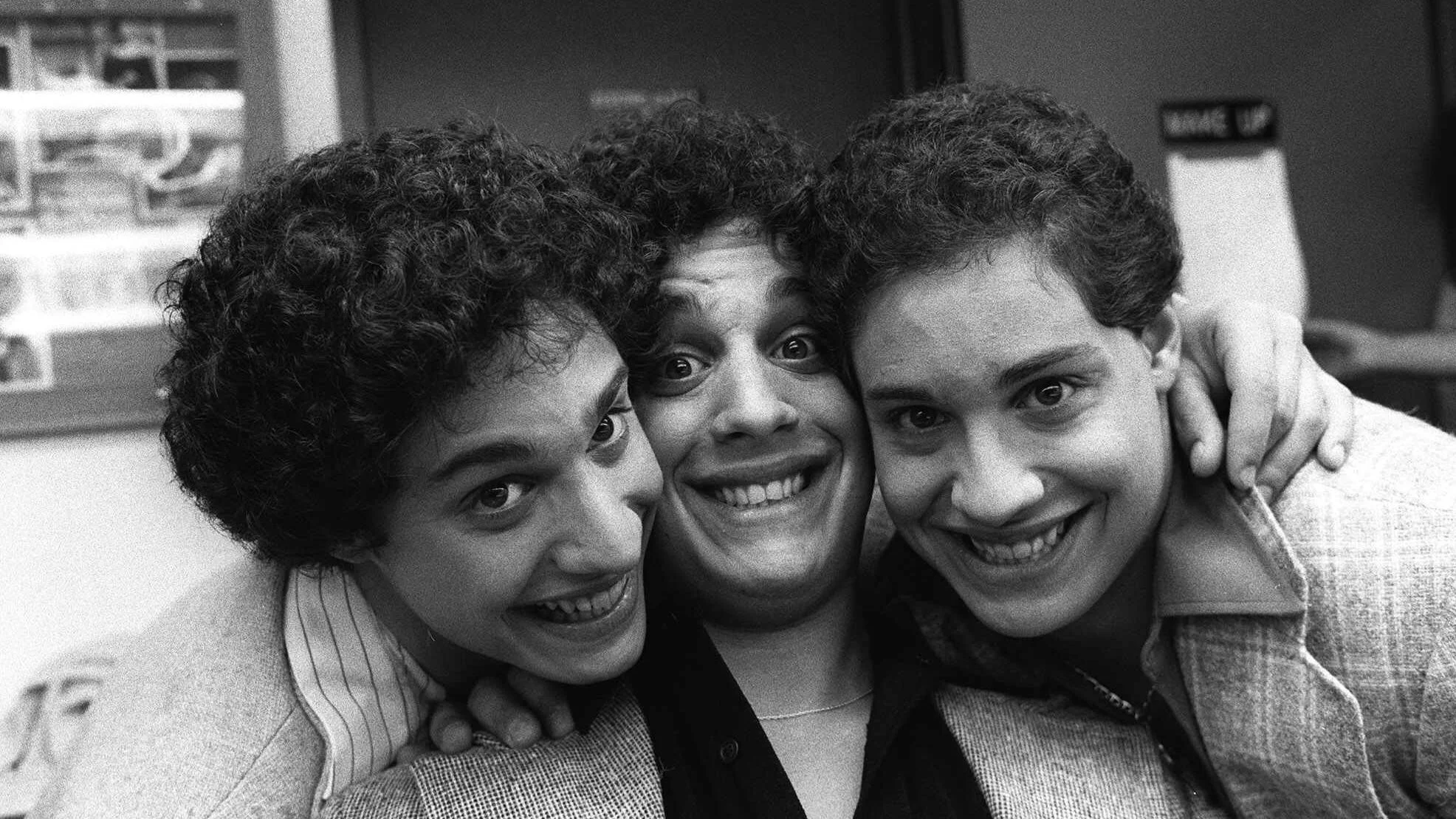Three Identical Strangers
A real-life story that takes you to places that you are not expecting.
This is a fascinating film and those viewers who have no qualms about documentaries peppered with reconstructions can safely increase the rating above. The story that it tells - one set largely in New York - could hardly be more intriguing. At the outset it shows Robert Shafran, who was born in 1961, recalling how he went to college at the age of nineteen and was immediately bemused to find himself being greeted by the other students as a familiar face. It then emerged that he had been mistaken for another pupil known to them, Eddy Galland. This was hardly surprising because, as soon became clear, they were in fact twins who, having both been adopted but by different families, had grown up unaware of each other’s existence.
The situation was unusual enough to be reported in the press with photographs and the consequence of that was even more extraordinary when David Kellman came forward to say that he brought their number to three. As newly acquainted triplets, their fame was boosted by television appearances and quickly spread: before long they would turn these events to profit by opening a New York restaurant named Triplet’s. Their story at this stage became one of adjustment and closeness and it was a tale interesting in itself since both their similarities and dissimilarities raised questions about the respective importance of nature and nurture on a growing child (they may have had parents in common but each had been brought up in households very different in character).
When approaching this film I knew already that it was famous for telling a story that would develop in surprising ways. It is only right that, if possible, viewers should discover these elements for themselves in the course of the movie, but it can be confirmed here that the second half of Three Identical Strangers enters unexpected territory that adds to its value. In that respect it brings to mind one of the most startling documentaries of recent years, the 2016 piece entitled Tickled, which was also an investigation into past events that took the breath away. That film found no need to incorporate frequent intercut reconstructions, but the director here, Tim Wardle, often takes the opposite view.
When one of the leading figures is talking direct to camera, Wardle is likely to insert scenes without dialogue but with half-glimpsed actors playing out what is being described. This is a pet hate of mine since it always suggests that the filmmaker is trying to kid the susceptible viewer into believing that a camera was present at the actual event. It implies too that what is being said needs to be spiced up and made more visual, as though the words alone are not enough. Because I feel that way about it, this device always puts me at a distance, but those who do not respond as I do can ignore this criticism. In any case, Three Identical Strangers largely gives up on this after the first third making it one of those films which for me was far more successful once the preliminaries were over. That being so, the power of the tale as it develops ensures that, whatever your attitude on this point, Three Identical Strangers is well worth seeing.
MANSEL STIMPSON
Featuring David Kellman, Bobby Shafran, Elliott Gallard, Lawrence Wright, Hedy Pace Lochs, Ellen Corone, Mort Shfran, Ilene Shafran, Janet Kellman, Brenda Gallard.
Dir Tim Wardle, Pro Becky Read and Grace Hughes-Hallett, Ph Tim Cragg, Ed Michael Harte, Music Paul Saunderson.
RAW/Universal Pictures/CNN Films/Channel Four Television/Sundance Institute Documentrary Film Program-Dogwoof.
97 mins. UK/USA. 2018. Rel: 30 November 2018. Cert. 12A.


